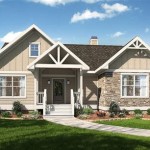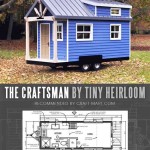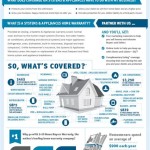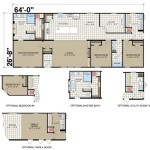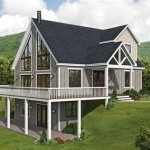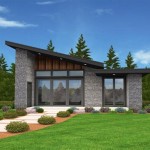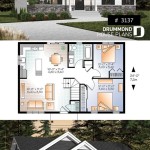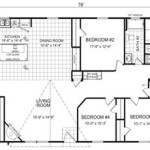3 Bedroom Cottage House Plans: A Comprehensive Guide
Cottage house plans, particularly those featuring three bedrooms, represent a popular choice for individuals and families seeking a blend of charm, functionality, and affordability. These designs often evoke a sense of warmth and intimacy, characteristics commonly associated with rural living and a desire for a more relaxed lifestyle. The appeal of a 3-bedroom cottage extends beyond aesthetics; it addresses practical needs, providing sufficient space for small to medium-sized families, retirees who enjoy having guest rooms, or those seeking a comfortable vacation home.
This article delves into the various aspects of 3-bedroom cottage house plans, exploring their defining features, common design elements, factors to consider during the selection process, and innovative approaches to maximizing space and functionality. Understanding these elements is crucial for anyone considering building or modifying a 3-bedroom cottage to ensure the final result aligns with their individual needs and preferences.
Understanding the Key Characteristics of Cottage House Plans
Cottage architecture is characterized by a set of distinctive features that contribute to its recognizable charm and appeal. These features are not rigidly defined but rather represent a collection of common elements that are often combined in various ways to create unique and aesthetically pleasing designs. Recognizing these core characteristics is essential to appreciating the nuances of different 3-bedroom cottage house plans.
One prominent element is the emphasis on natural materials. Stone, brick, wood siding, and cedar shingles are frequently incorporated into the exterior design, creating a sense of connection with the surrounding environment. These materials not only contribute to the visual appeal but also offer durability and longevity. The use of natural materials extends to the interior, often featuring exposed beams, hardwood floors, and natural stone fireplaces.
Another defining feature is the presence of steeply pitched roofs and gables. These architectural elements add visual interest and contribute to the overall sense of coziness. Dormers, which are typically small windows projecting from the roof, are also common, providing additional light and space to the upper levels. The roof design often incorporates multiple gables, creating a more complex and visually appealing facade.
Windows play a crucial role in cottage architecture, often featuring multi-pane designs and window boxes filled with colorful flowers. These windows allow ample natural light to enter the interior spaces while also framing views of the surrounding landscape. The use of shutters, often painted in contrasting colors, adds to the visual appeal and provides a functional element for controlling light and ventilation.
Porches are another integral part of cottage design, providing a welcoming space for relaxation and outdoor enjoyment. Front porches, often covered and supported by columns, create a transition between the interior and exterior spaces. Back porches or patios offer a more private area for outdoor dining and entertaining. The presence of a porch encourages a connection with nature and provides a comfortable space for enjoying the outdoors.
Inside, cottage plans often prioritize open floor plans, creating a sense of spaciousness and encouraging interaction between family members. Fireplaces, often made of stone or brick, serve as a focal point in the living area, adding warmth and ambiance. The interior design typically incorporates elements that enhance the feeling of coziness and comfort, such as soft lighting, comfortable furniture, and natural textures.
Factors to Consider When Selecting a 3-Bedroom Cottage House Plan
Choosing the right 3-bedroom cottage house plan involves careful consideration of various factors to ensure the final result aligns with individual needs, lifestyle, and budget. A thorough assessment of these factors will contribute to a successful and satisfying building or renovation project.
One of the primary considerations is the size and layout of the property. The footprint of the cottage must be compatible with the available land, taking into account setbacks, easements, and other restrictions. The orientation of the cottage on the property should also be considered to maximize natural light and views while minimizing exposure to harsh weather conditions. A professional site survey and assessment are highly recommended to identify any potential challenges or opportunities.
The number of occupants and their lifestyle are also important factors to consider. A family with young children will have different needs than a retired couple. The layout of the cottage should reflect these needs, providing adequate space for living, sleeping, and entertaining. Consider the need for dedicated workspaces, storage areas, and accessibility features.
Budget is a critical constraint in any building project. The cost of materials, labor, and permits can vary significantly depending on the location and complexity of the design. It is essential to establish a realistic budget early in the planning process and to stick to it as closely as possible. Obtaining multiple quotes from contractors and suppliers is recommended to ensure competitive pricing. Consider phasing the project if necessary to make it more manageable financially.
The architectural style of the cottage should also be considered. There are many variations of cottage design, from traditional English cottages to more modern interpretations. The style of the cottage should be compatible with the surrounding environment and reflect the personal preferences of the homeowner. Consider the use of specific materials, colors, and landscaping to create a cohesive and aesthetically pleasing design.
Energy efficiency is another important factor to consider. Incorporating energy-efficient features into the design can significantly reduce utility costs and minimize the environmental impact of the cottage. Consider using energy-efficient windows, insulation, and appliances. Incorporating solar panels or other renewable energy sources can further reduce energy consumption. A well-designed cottage should be comfortable to live in year-round while minimizing energy usage.
Finally, consider the long-term value of the cottage. A well-designed and well-maintained cottage can be a valuable asset. Choose materials and finishes that are durable and timeless. Consider the potential for future additions or modifications. A cottage that is adaptable to changing needs will retain its value over time.
Innovative Approaches to Maximizing Space and Functionality in 3-Bedroom Cottages
Given the often smaller footprint of cottage house plans, maximizing space and functionality is a crucial consideration. Innovative design approaches can transform a seemingly compact space into a comfortable and efficient living environment. These approaches often involve creative storage solutions, multi-functional spaces, and clever use of natural light.
One common strategy is to utilize vertical space. Building up rather than out can significantly increase the available living area without expanding the footprint of the cottage. Lofts, vaulted ceilings, and strategically placed shelving can all contribute to a sense of spaciousness. Incorporating built-in storage solutions, such as bookshelves, cabinets, and window seats, can also maximize space utilization.
Open floor plans are particularly effective in creating a sense of spaciousness in smaller cottages. Combining the living room, dining room, and kitchen into a single open area eliminates the need for walls, allowing light to flow freely throughout the space. The use of strategically placed furniture and rugs can help to define distinct zones within the open area.
Multi-functional spaces are another key to maximizing functionality. A guest room that doubles as a home office, a dining table that can be used for crafts or hobbies, or a living room that can be easily converted into a movie theater are all examples of multi-functional spaces. The use of flexible furniture, such as folding tables and stackable chairs, can further enhance the adaptability of these spaces.
Natural light plays a significant role in creating a sense of spaciousness and well-being. Maximize natural light by incorporating large windows, skylights, and light wells. Strategically placing mirrors can also reflect light and create the illusion of more space. The use of light-colored paint and finishes can further enhance the effect of natural light.
Outdoor spaces can be an extension of the living area, especially during warmer months. A well-designed porch, patio, or deck can provide additional space for relaxation, dining, and entertaining. Connecting the indoor and outdoor spaces visually and physically can create a seamless transition and enhance the overall sense of spaciousness.
Finally, consider incorporating smart home technology to automate tasks and control the environment. Smart lighting, thermostats, and security systems can enhance comfort, convenience, and energy efficiency. The use of voice-activated assistants can further simplify daily routines and make the cottage more livable.

3 Bedroom Cottage With Options 52219wm Architectural Designs House Plans

Spacious Cottage 3 Bed 2 Bath 40 X40 Custom House
:max_bytes(150000):strip_icc()/winonna-park-SL-503-0675202627e340c8ba545498653420fc.jpg?strip=all)
Three Bedroom House Plans That Never Require A Downsize

House Plan 20003 Traditional Style With 816 Sq Ft 3 Bed 1 Bat

Small 2 Story 3 Bedroom Southern Cottage Style House Plan Plans Floor

3 Bedroom Small Sloping Lot Lake Cabin By Max Fulbright

Cottage Floor Plan 3 Bedrms 2 Baths 1905 Sq Ft 193 1108

House Plan 3 Bedrooms 1 Bathrooms 2161 Drummond Plans

Traditional 3 Bedroom Cottage House 1 5 Story 2 Bath

House Plan 1776 00096 Cottage 1 320 Square Feet 3 Bedrooms 2 Bathrooms Plans Floor Sims

